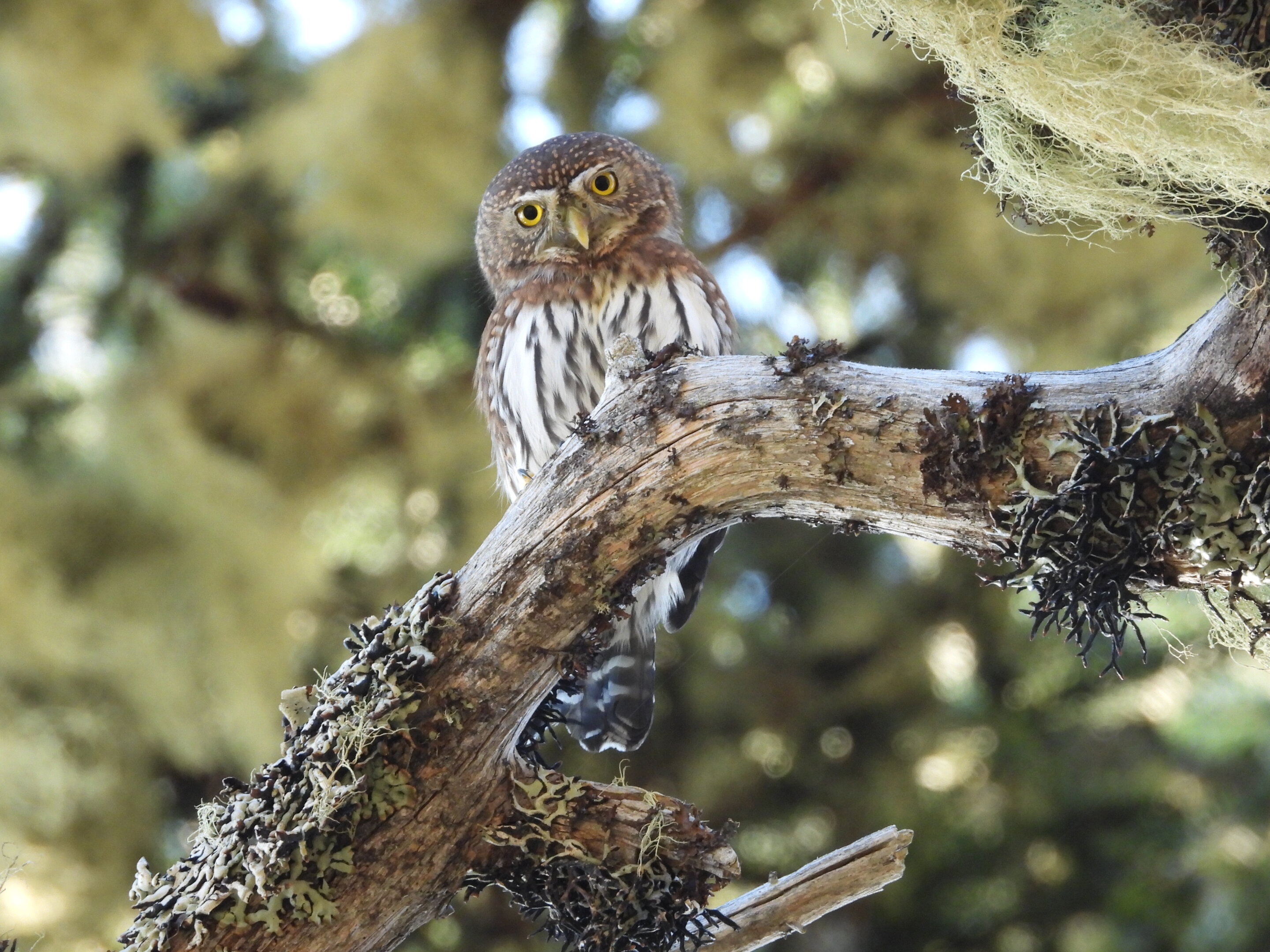11 Dec 2024

Tired Earth
By The Editorial Board

Fleeing isn't the only way by which songbirds can protect themselves against predators. Many songbird species are known to engage in mobbing, where they gather aggressively around a bird of prey, flying rapidly while making stereotypic movements and loud vocalizations. Mobbing is risky for both parties: birds of prey have been observed to attack their mobbers, while cases are known of mobbing songbirds injuring birds of prey.
Now, biologists from Oregon State University have shown that songbirds can tell when the risk of predation by a common predator is highest, depending on season and geography. In response, they increase the frequency of mobbing behavior. When this risk is minimal, they are more likely to avoid or ignore the predator; in this case, the northern pygmy owl. These results are published in Frontiers in Ecology and Evolution.
"Mobbing must be energetically costly, because we find that it's rare during winter, when food is scarce but there are still plenty of songbirds around," said second author Prof. W. Douglas Robinson from Oregon State University.
"On top of this effect, the likelihood of mobbing also increased as the number of songbirds present increased, diluting the risk to each mobber. Thus songbirds can assess when the risk of predation from northern pygmy owls is highest and when there is safety in numbers."
Ambush predator of mammals and birds
Robinson and his graduate student, Madeleine Scott, the study's first author, studied mobbing of northern pygmy owls (Glaucidium gnoma) in western Oregon, U.S., near the town of Corvallis and in the nearby Pacific Mountain Systems. Northern pygmy owls are a small, diurnal owl species of western North America. They usually attack small mammals and songbirds by ambushing them from a hidden location.
"The proportion of small birds relative to small mammals in the diet of the northern pygmy owl almost doubles from spring to summer, making birds the primary food source in summer. This is presumably because of the increasing availability of fledged offspring birds," said Scott.

Mobbing elicited by playback of owl calls
Throughout 2020 and 2021, Scott and Robinson played back recordings of the advertising call of the northern pygmy owl a total of 663 times from 547 different locations at altitudes between 80 and 1,200 meters, to provoke mobbing. Each playback lasted for one minute from a speaker mounted on a 3.3-meter-high pole. Northern pygmy owls call throughout the year (with bouts of up to 60 minutes) to attract mates and establish territories. Before and after each playback, the authors recorded the number and species of songbirds present within 50 meters from the speaker. They also noted down whether the songbirds intensified their own vocalizations, moved within five meters of the speaker, or showed any mobbing behavior towards it.
Overall, mobbing was observed in 8.1% of trials. Mobbing behavior peaked (seen in up to 23% of trials) in late summer and autumn when northern pygmy owls mostly prey on young birds, but was rare in spring and in winter (1%), when they mostly prey on small mammals. The likelihood of mobbing also decreased with altitude, which correlates with the lower density of these owls at higher altitudes.
Twenty-four species of songbirds engaged in mobbing; the most frequent mobbers were chickadees, red-breasted nuthatches, Pacific wrens, and dark-eyed juncos—all small species that are on the owl's menu. Larger species, such as thrushes and jays, have rarely been observed as prey of northern pygmy owls, and rarely engaged in mobbing, even though they commonly mob larger owls.
Diluting the risk from mobbing
On average, 12.8 songbirds were recorded near the speaker during playbacks, and the likelihood of mobbing increased as this number became greater.
The authors conclude that songbirds tend to follow a rule of thumb: Only mob if the threat toward you is real; if not, go about your own business. But when the threat is real and mobbing is beneficial, only do so if there are enough songbirds around to dilute the risk.
"Future research questions should study how the energetic cost of mobbing impacts the frequency of the behavior. For example, examining seasonal food availability and supplementing with additional feeders could reveal the how energetic considerations influence mobbing behavior," said Scott.
Source : phys.org
Comment